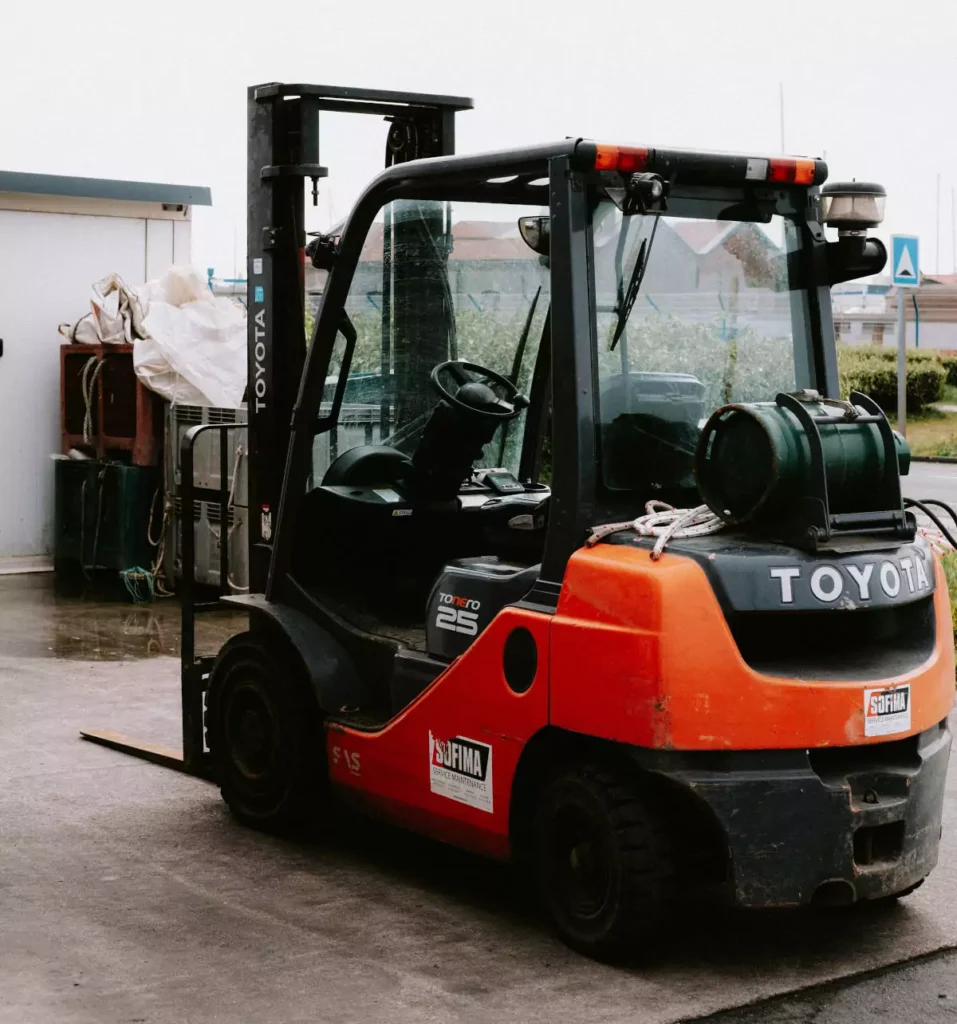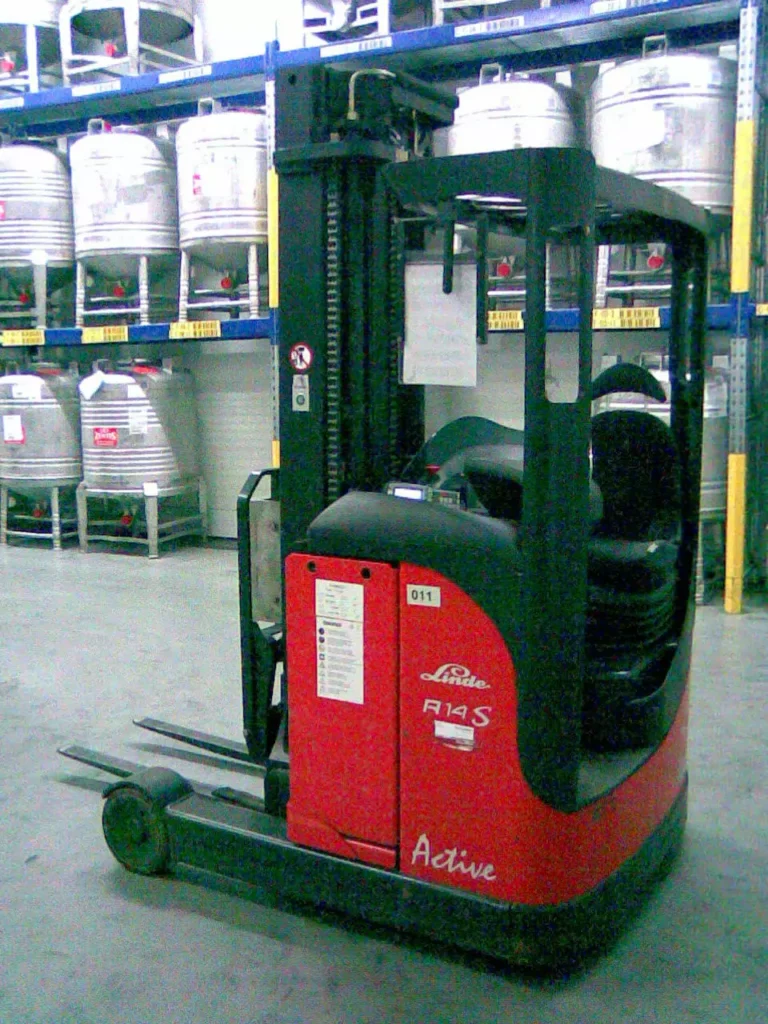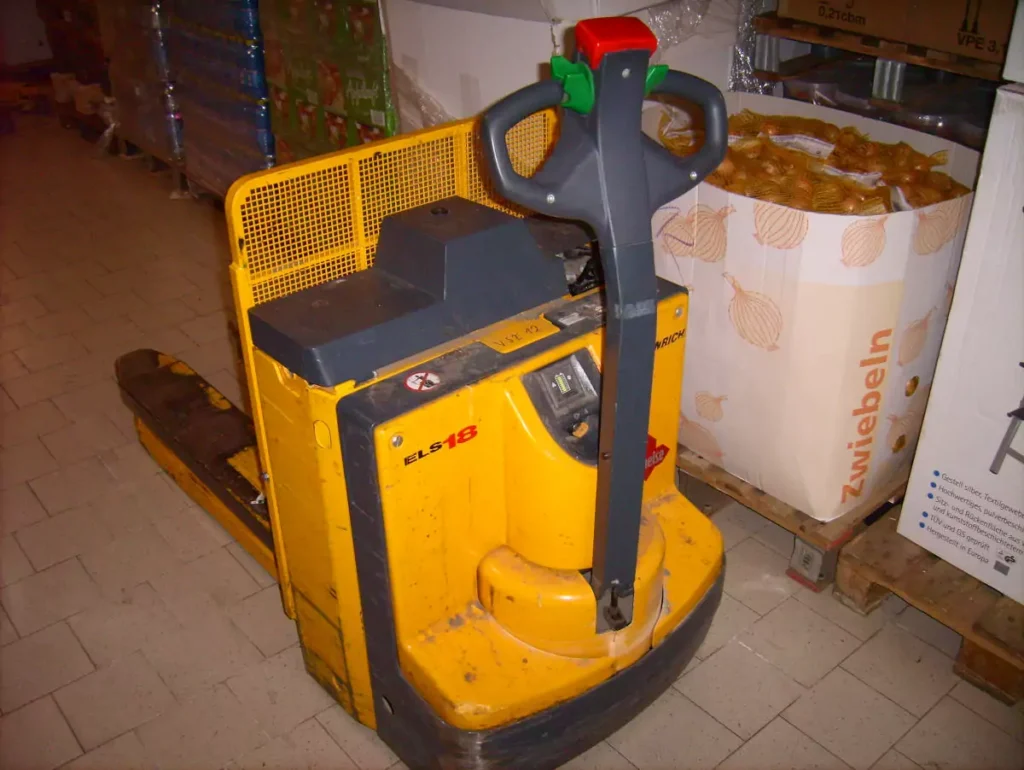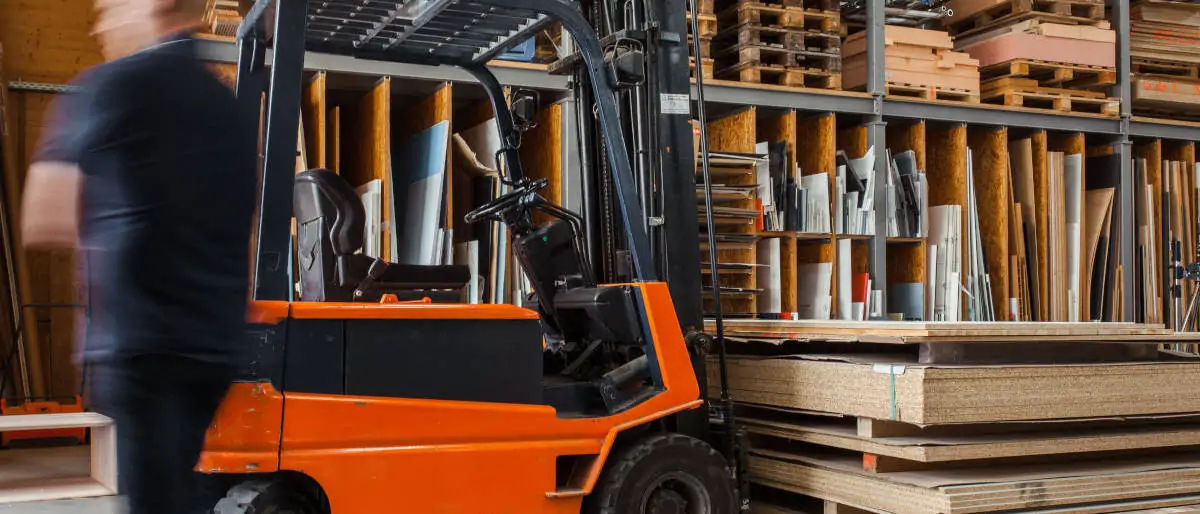Industrial trucks – definition, function and types
Industrial trucks, also known as forklift trucks or pallet trucks, are vehicles used to transport goods and materials within a company – horizontally and at ground level. (Vertical) transporting equipment, such as that suspended from the ceiling or running on rails, is referred to as overhead conveyor equipment.
In production plants, warehouses and distribution centres, industrial trucks are usually used for internal transport. These differ in their functions, intended use and method of operation; nevertheless, they can be divided into trackless, track-bound and track-guided industrial trucks. Official standardisations or categories come from the VDI on the one hand and the German Social Accident Insurance (DGVU) on the other.
Classification according to VDI
According to VDI guideline 3586, the Association of German Engineers divides industrial trucks into seven groups.
- Manually operated devices
- Petrol and LPG-powered devices
- Diesel-powered vehicles for outdoor use
- Pedestrian-controlled electric devices
- Stationary electric devices
- Electric rider seat devices
- Order picking devices
Each group is assigned a corresponding abbreviation. These abbreviations are used to create or decode type sheets for industrial trucks in accordance with VDI guideline 2198 and other European standards. The abbreviation indicates the drive system, the type of operation and the design, as well as whether the industrial truck is driverless. In addition, the following classification is also used in accordance with the DIN 15140 standard for forklift trucks with a driver’s seat:
- front forklift truck
- reach truck
- four-way forklift truck
- transverse forklift truck
Classification according to DGVU
According to the relevant regulations of the German Social Accident Insurance (DGUV), in particular DGUV Regulation 68, industrial trucks are characterised by the fact that they:
- run on wheels in the corridor and are freely steerable
- are designed to transport, pull or push goods
- can be used in-house
According to the accident prevention regulation, industrial trucks with lifting devices should also have the following additional features:
- In addition to stacking and lifting goods, these industrial trucks should also be able to store goods on shelves.
- The industrial trucks must be able to pick up and put down loads.
The use of industrial trucks by employees in the company requires compliance with the regulations of the employers’ liability insurance association. These include, above all, instruction and a forklift truck licence for trucks with a motor.
Functions of industrial trucks
Essentially, industrial trucks can be roughly categorised based on their functions, regardless of other criteria. Various functions of industrial trucks are used for transport within the production area or between the warehouse and the production area or from loading ramps to storage locations and racks. Although they move horizontally and at ground level, some can also carry out vertical transport. Depending on the application, three types can be distinguished:
- Lifting trucks – These include, in particular, various types of forklift trucks, which are primarily used to store and retrieve goods on pallets and in corresponding pallet racking systems.
- Non-lifting trucks – Manual or electric trucks without the function of storing and retrieving pallets, boxes or containers in a rack.
- Order picking forklifts – are used to put orders together using picking racks.
Which industrial trucks are used specifically influences the planning of warehouse solutions. Shelf height and size as well as aisle width are directly related to the selection of the respective industrial trucks.
List of common industrial trucks
The best-known industrial trucks include forklifts and pallet trucks, but there are many more types and more precise designations. The following list provides an overview:
Lift mast truck/counterbalance truck

They have a counterweight at the rear, which allows them to pick up heavy loads. They are very flexible in use, as they can both store and retrieve goods in pallet racks and move quickly and manoeuvrably through the warehouse. Mast/counterbalance forklifts are what are commonly referred to as forklifts.
Reach trucks

Reach trucks are designed to work in confined spaces and reach high heights. They are used in particular in high-bay warehouses, cold stores and logistics centres.
Pallet trucks

Compared to forklift trucks, pallet trucks are cheaper, lighter and, above all, more manoeuvrable. Although they cannot store and retrieve pallet racking systems, as they are non-lifting industrial trucks, they are nevertheless very versatile and widely used. There are electronic pallet trucks and hand pallet trucks. With the latter, the operator walks alongside, while there are electric variants in which the operator sits or stands while controlling the truck. There are also semi-electric pallet trucks and pallet trucks with integrated scales, which allow several work steps to be combined. The pallet trucks colloquially known as ‘ant’ are low-lift pallet trucks; in contrast to these, there are also high-lift pallet trucks, lift table trucks and scissor lift pallet trucks.
Order picker
This type of forklift is used specifically for order picking to put orders together. It is characterised by the fact that the operator has access to the control elements while also having access to the load. Order pickers are also called order pickers or order pickers.
In addition, there are:
- Container forklift trucks
- Telescopic forklift trucks
- Heavy-duty forklift trucks
- all-terrain forklift trucks
- side loader
- truck-mounted forklift
- stand-on stacker
- high-level stacker truck
- narrow-aisle stacker truck
- four-way/multi-directional sideloader
- straddle carrier
- long-distance forklift truck
- driverless transport vehicle (DTV)
- bed mover
- reach stacker
- tractor/tug
- rolling container
- Mesh trolleys/rolling cages
- Tugger train
Summary
Industrial trucks are trackless, track-bound or track-guided vehicles used for the internal transport of goods. The transport takes place horizontally and at ground level. In addition, industrial trucks can also perform other functions, including stacking, lifting or weighing loads. The operator walks alongside, sits or stands on the industrial truck; there are also driverless industrial trucks. Industrial trucks can be moved manually or driven by combustion, electric or hybrid motor.
Industrial trucks are generally flexible to use and highly manoeuvrable. However, their numerous forms make it necessary to include them in the planning of intralogistics solutions from the outset, as they affect the size of the warehouse, the maximum storage capacity and the maximum warehouse movements as well as the width of the aisles and ultimately the throughput rate. They also require a certain amount of maintenance and compliance with certain regulations for operation and control.
Find out more about material flow calculators, continuous and discontinuous conveyors and AGVs.
